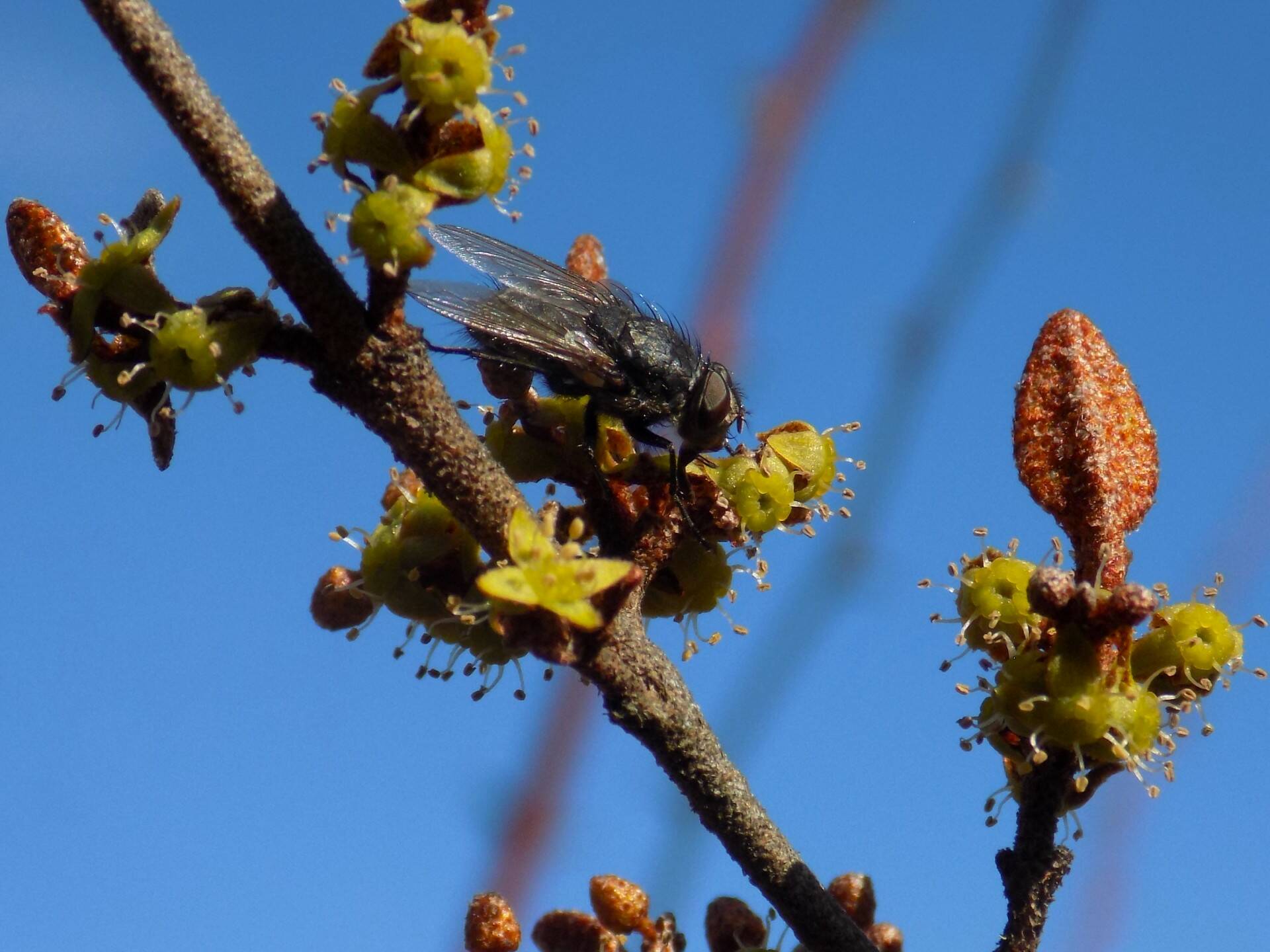By Russel Barsh
Executive Director of Kwiaht
Some of the first spring blooms in the islands are the tiny pale yellow flowers of soapberry, a plant of great cultural significance that has a surprising superpower!
Soapberry (Shepherdia canadensis), known in Canada as buffaloberry or soopolallie, and as sxwáseng in Lekwungen, the Indigenous Coast Salish language of the islands, is one of the most distinctive and valuable shrubs in the San Juan Islands, and yet one of the least recognized by present-day islanders.
For one thing, soapberry is more common in the San Juan Islands than on mainland western Washington. Patches can be found on San Juan Island, Lopez, Sucia, and some of the tiny islands of the National Wildlife Refuge and National Monument. There is also soapberry on Chuckanut Mountain and at Deception Pass. To find another concentration of soapberry in our state you must travel across the Cascades to Okanogan County.
This pattern of distribution is characteristic of plant species that thrived when the Northwest climate was warmer and drier 6,000 to 10,000 years ago; and then retreated to small geographic areas with relatively dry microclimates such as the Olympic rain shadow. The rain shadow effect is strongest on San Juan Island and Lopez, where soapberry is widespread and weakest on Orcas, where it is nearly absent.
Soapberry is dioecious, which is to say that there are separate male and female plants, with anatomically different male and female flowers. Over most of its range, soapberry generally blooms from May to June. In the islands, it blooms as early as February, when the weather tends to be wet, windy, and cold. A few bumblebees may emerge cautiously when we have a mid-winter warm spell, but midges, true flies and flower flies (or hoverflies) are the pollinators most often observed on early-flowering soapberry. Flies are also responsible for a large part of the pollination of plums and cherries in the islands, which can flower in March long before most native trees and shrubs.
Flies are not efficient pollinators; in fact, it may be advantageous for island soapberry plants to bloom in winter when there are so few other plants in flower to distract errant flies! Even if they are pollinated, soapberry plants require warm long summer days for its fruit to ripen. As a result, island soapberries often bear little or no fruit.
Soapberries are bright red, attractive to birds, but loaded with saponins. Saponins are a diverse family of soap-like phytochemicals that can be extremely foul-tasting and probably evolved to protect plants by discouraging sucking and chewing insects. Saponins can also taste very sweet, however. One example is glycyrrhizin, the sweet-tasting flavoring in licorice root.
The saponins in soapberries taste bitter at first but with a sweet aftertaste. And they make it possible to whip soapberry juice into a pale pink foam with a distinctive, truly unforgettable bittersweet flavor. Here in the islands, soapberry foam was called sxwásem and it was a special treat for children in late summer. Elsewhere in the Pacific Northwest and Alaska, you may encounter soapberry foam as “Indian ice cream,” a tradition just about everywhere that soapberries grow. It is so popular that some communities can their soapberries so that they can enjoy the bittersweet foam year-round.
Saponins from many plant species have been demonstrated to have antibiotic properties. The saponins in soapberry have not yet been fully studied. Whether eating soapberries has health benefits for birds or humans remain to be discovered.
The surprising superpower of soapberry: it is the only native shrub in the islands that fixes nitrogen in the soil. We also have one nitrogen-fixing tree, which is the red alder (Alnus rubra). Although alders thrive in wet soil and soapberry in warmer dry soil, both species form distinctive nitrogen-fixing root nodules with bacteria in the genus Frankia. There are also a number of nitrogen-fixing native herbaceous plant species in the island—chiefly members of the “pea family” (Fabaceae) such as the vetches and lupines, which are most common along seashores such as Cattle Point and South Beach, and Iceberg Point on Lopez.
Unfortunately, island soapberry tends to occur in small patches in hedgerows and along roadsides, where they are frequently mown down indiscriminately along with invasive Himalayan blackberries and English hawthorns. Instead, farmers and gardeners should welcome and protect soapberry patches, and use this easily managed shrub to help reclaim exhausted, well-drained soils. The birds will thank you; and try the “ice cream”. It is pink and powerful!



